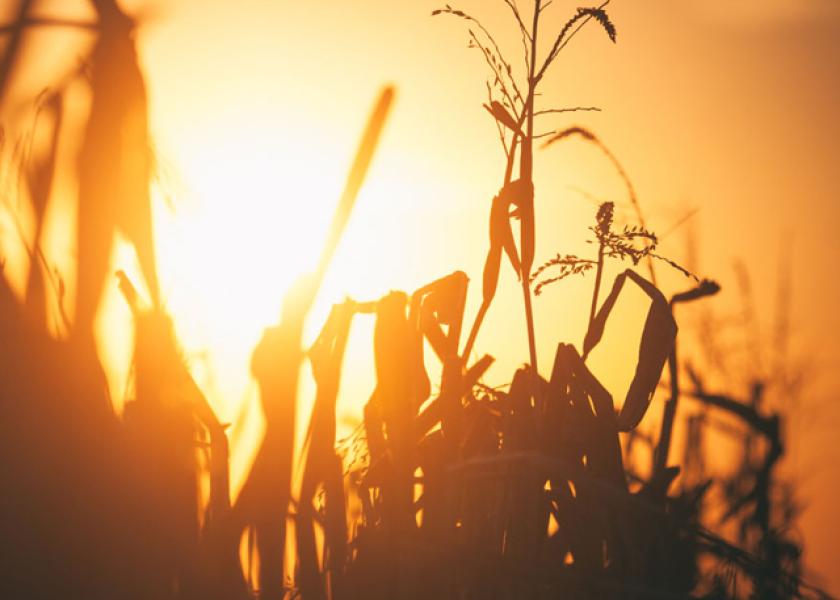Should You Hay or Cut Silage from Drought-Damaged Corn Fields?

Drought conditions across much of Nebraska will limit grain yields in dryland corn this year, leading growers to look at other options for harvesting value from these fields. In some cases, harvesting the crop for silage may be viable. In other cases, harvesting this plant material may contribute to nutrient and water removal from the soil and may not be the best solution for your rotation or cropping system.
First, remember that drought-damaged corn may be high in nitrates and will require extra care when feeding the forage. Always test the forage for nitrates before feeding. High nitrate forages can be mixed with low nitrate forages or other feeds to reduce nitrates to an acceptable level for feeding. The lowest part of the corn stalk contains the most nitrates so leaving at least 10 inches of stalk will help reduce the nitrate level in the forage. Leaving taller corn stalks also will reduce erosion and trap snow moisture.
In western Nebraska where the rotation of winter wheat-corn-pre-winter wheat fallow is used to produce two crops in three years, the producer will usually come out ahead by not taking the corn crop for hay or silage. (In place of corn, the rotation can include grain sorghum or other spring-planted crops.) If there is enough grain to make grain harvest economical, it should be harvested for grain.
Why shouldn’t the producer try to salvage something from the drought stricken crop? With this rotation, the field is fallowed after the corn, grain sorghum or other spring-planted crop in preparation for seeding wheat in the fall. This fallow period allows for soil water to be stored for the winter wheat seeding in the fall.
Most crop producers will tell you that having a good winter wheat crop increases your success with the spring-planted crops after winter wheat. Without crop residue, the fallow period will be very inefficient in storing soil water and the field will be subject to wind and water soil erosion. Also, if most of the corn stalk is removed by haying or silage, the snow will blow off the field. In a study by David C. Nielsen comparing 27- to 29-inch sunflower stalks with flattened sunflower residue, the field with stalks stored 2.9 inches more soil water from snow than the one with flat residue.
If you must hay or cut the corn for silage, leave at least 10 inches, preferably more, stalk height. Leave eight rows (or the number of rows of your planter) standing and hay or cut silage on an equal number or twice the number of rows. This will result in removing one-half to two-thirds of the crop while still leaving some corn residue to help protect the soil. If all the corn residue is removed, you’ll need to seed a crop in the fall to protect the soil.







